Embark on a journey of discovery with us as we delve into the world of Kentucky Saddler horses, a breed with a rich history and unique characteristics. We’ll explore the common health issues they face, and the preventative measures needed to ensure they maintain optimal health.
Table of Contents (Horspedia)
Breed Overview
The History of the Kentucky Saddler
The Kentucky Saddler, also known as the American Saddlebred, has a rich history that dates back to the early 1800s. This breed was developed in the United States, predominantly in Kentucky, as a utility horse with a focus on comfortable, smooth gaits and exceptional versatility. Rooted in the breeding of Thoroughbreds, Morgans, and Narragansett Pacers, the Kentucky Saddler quickly gained popularity among horse enthusiasts for its unmatched grace and athleticism.
Health Issues and Care
One of the most distinguishing characteristics of the Kentucky Saddler is its flashy, high-stepping gaits, particularly the slow gait and the rack. These gaits, although beautiful and smooth, place unique strains on the horse’s limbs and joints. As a result, Kentucky Saddlers are often susceptible to lameness and various joint issues, such as osteoarthritis and navicular disease. Owners and fans of this breed must be diligent in monitoring for signs of discomfort or pain and offering appropriate treatments, including joint supplements, proper hoof care, and physical therapy when necessary.
Genetic Conditions
In addition to the increased risk of joint problems, the Kentucky Saddler has a tendency to be predisposed to certain genetic conditions. These may include, but are not limited to, hereditary equine regional dermal asthenia (HERDA), which is a skin disorder, and junctional epidermolysis bullosa (JEB), a severe and usually fatal skin disease. Although rare, potential breeders and buyers should be aware of these conditions and take precautions when breeding and buying Kentucky Saddler horses.
Introduction
As an enthusiast or hobbyist aiming to become skilled in Kentucky Saddler health issues, it is essential to familiarize yourself with potential problems that can affect the well-being of these magnificent horses. By acquiring knowledge about their health, you can ensure their longevity and contribute to the breed’s continued advancement.
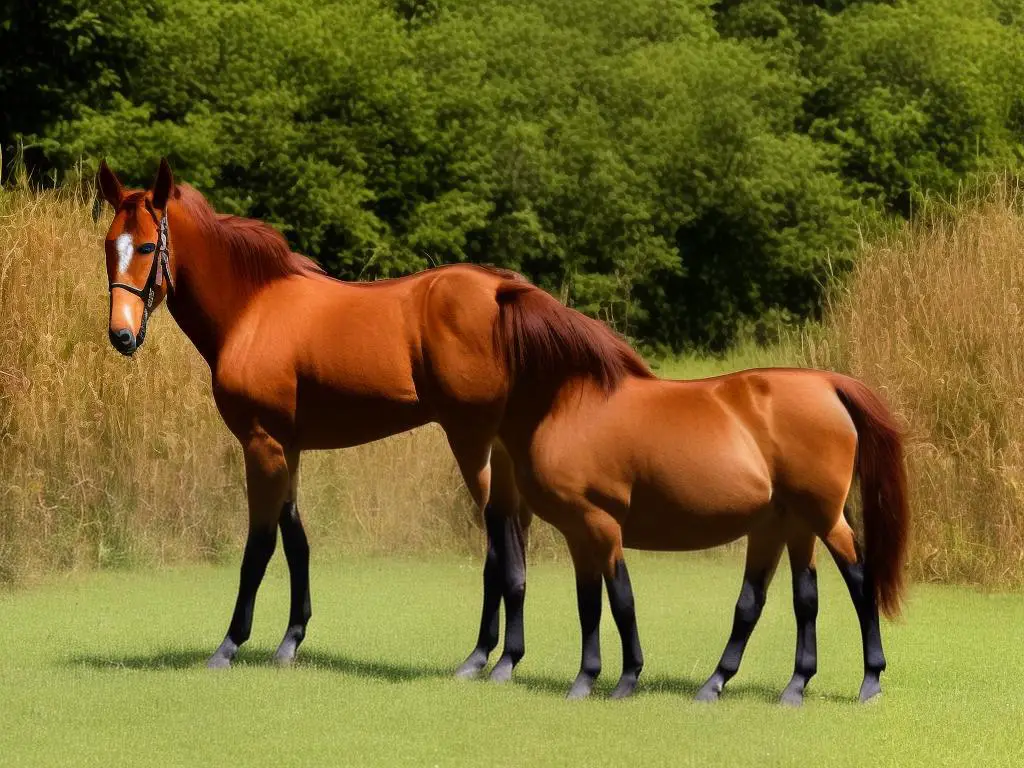
Common Health Problems
Colic in Kentucky Saddlers
One common health issue that affects the Kentucky Saddler breed, as well as many other horse breeds, is colic. Colic refers to abdominal pain and can be caused by various factors, including gas distension, impactions, and twisted gut. It is crucial to recognize the signs of colic early on, as life-threatening complications can arise if left untreated. Some common indicators of colic in horses include pawing, rolling, looking at the belly, and decreased appetite. If you notice any of these symptoms, seek immediate veterinary attention to determine the cause of the colic and provide appropriate treatment.
Arthritis
Arthritis is another health issue frequently seen in Kentucky Saddlers, particularly as they age. This degenerative joint disease can cause pain, inflammation, and stiffness in the affected joints, and it can greatly limit the horse’s ability to perform comfortably. Over time, the cartilage within the joint wears away, leading to the formation of bone spurs and other structural changes. Osteoarthritis can be managed with proper veterinary care, which may include medications to reduce inflammation and pain, joint injections, and nutritional supplements. Maintaining an appropriate level of exercise and weight for the individual horse is also critical to managing arthritis.
Laminitis
Laminitis is a painful and potentially crippling condition that can affect Kentucky Saddler horses. It is caused by inflammation of the laminae, which are the connective tissue structures that attach the hoof wall to the underlying bone. When laminitis occurs, the connection between the hoof and the bone is compromised, leading to intense pain and potential structural damage. This condition can be triggered by various factors, including excessive weight-bearing on one leg, high carbohydrate diets, and systemic infections. Early detection and intervention are vital to managing laminitis, as untreated cases can result in severe lameness and, in some instances, necessitate euthanasia. Veterinarians can provide treatments such as therapeutic shoeing, medication to alleviate pain and inflammation, and dietary adjustments to help manage the condition.
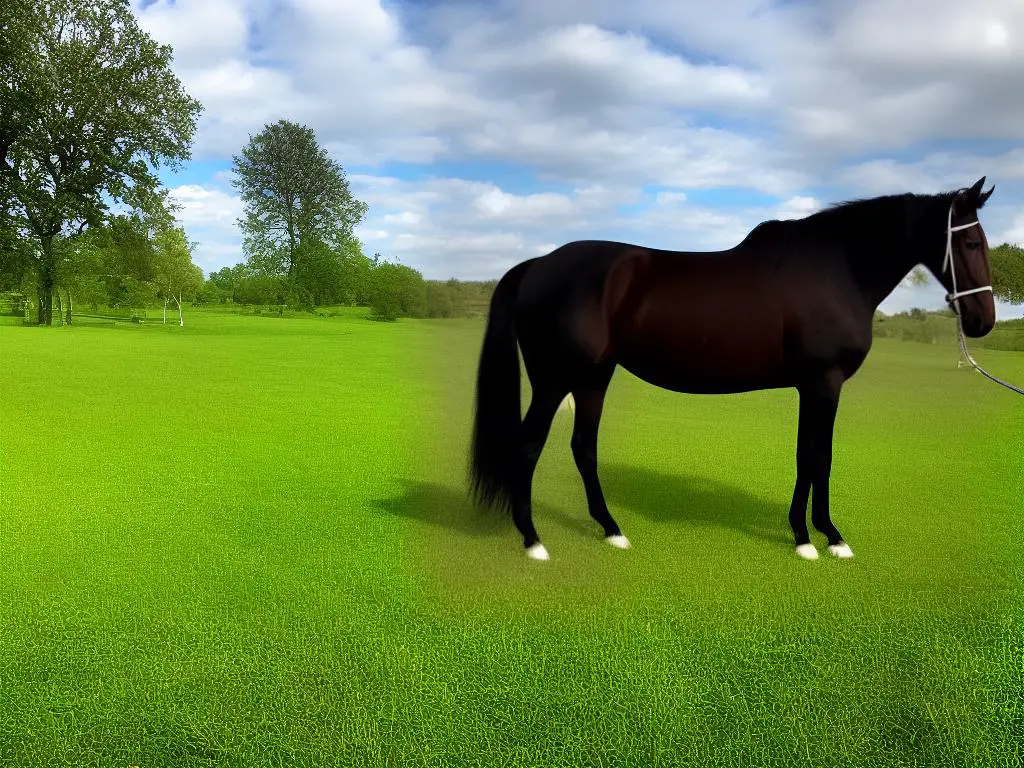
Preventive Care
Regular Veterinary Care
Ensuring regular veterinary care for your Kentucky Saddler is essential to maintaining optimal health and managing conditions like laminitis. Routine veterinary check-ups can help identify potential health issues before they worsen. Veterinarians can also provide recommendations for appropriate vaccinations, dental care, and nutrition tailored to your horse’s specific needs.
Establishing a regular relationship with professionals can also create a support network for the owner, making it easier for them to address any health concerns that may arise in their Kentucky Saddler horse.
Vaccinations
Vaccinations are essential for preventing disease in Kentucky Saddlers. The American Association of Equine Practitioners (AAEP) recommends a core vaccination schedule for all horses. Core vaccines include those for:
- Eastern/Western Equine Encephalomyelitis
- Rabies
- Tetanus
- West Nile Virus
Other risk-based vaccines for diseases such as Strangles, Potomac Horse Fever, and Influenza may also be recommended based on factors such as geographic location, age, and exposure risk. Consult with your veterinarian to determine the most appropriate vaccination schedule for your horse’s needs.
Parasite Control
Internal parasites can cause weight loss, poor performance, colic, and other health issues if left untreated. Therefore, effective parasite control is essential in maintaining the health of Kentucky Saddlers.
To develop an appropriate deworming program, it’s crucial to conduct regular fecal egg count testing, which helps in determining the necessary treatment frequency based on your horse’s parasite burden. Collaborating with your veterinarian to create a targeted deworming plan that addresses the specific needs of your horse will help maintain their health and prevent the development of drug-resistant parasites.
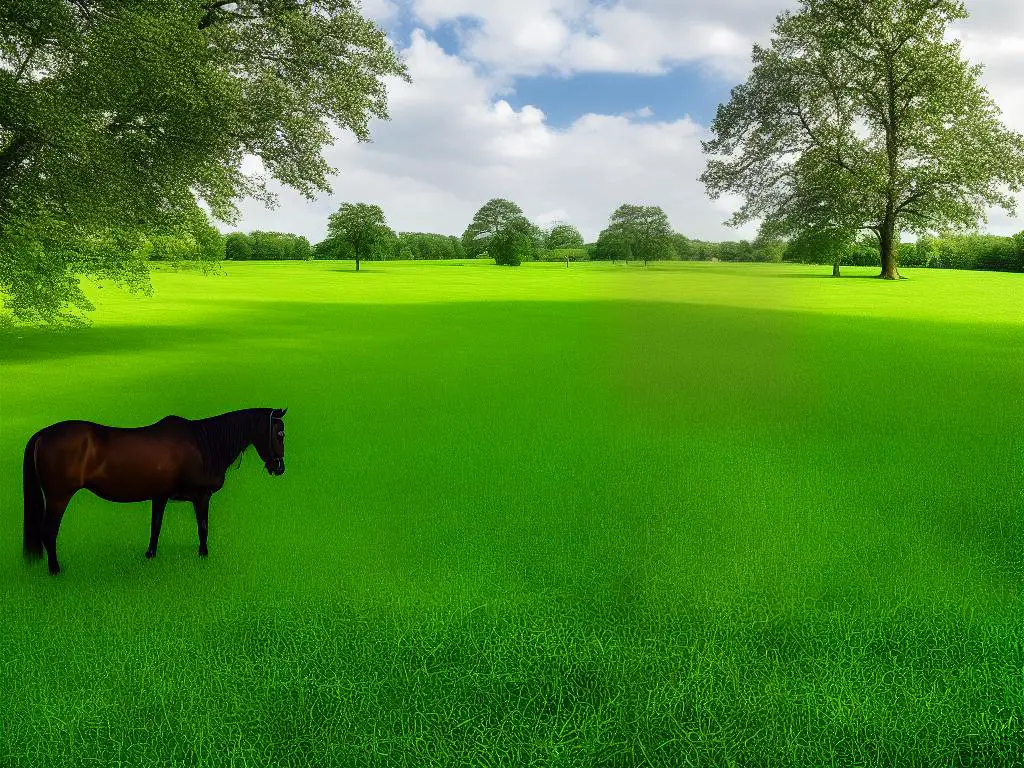
Proper Nutrition
Proper Nutrition for Kentucky Saddler Horses
In addition to parasite control, proper nutrition plays a critical role in maintaining the overall health and well-being of Kentucky Saddler horses. A well-balanced diet provides these equines with the necessary energy, protein, vitamins, and minerals for optimal growth, performance, and health. An unsuitable diet can lead to various health issues, such as gastrointestinal problems, weight gain or loss, and increased risk of health complications like laminitis or colic.
To ensure the long-term health and well-being of your Kentucky Saddler, it’s essential to understand and provide a tailored diet that meets their specific nutritional needs, thereby complementing your parasite control efforts.
Balancing Nutrients
Balancing nutrients is a critical aspect of proper equine nutrition, especially for Kentucky Saddlers. The foundation of their diet should be high-quality forage, such as hay, which provides a natural source of fiber and assists in maintaining proper digestive function. As a horse owner, it’s essential to ensure that your Kentucky Saddler receives the correct ratio of carbohydrates, fats, proteins, vitamins, and minerals. For example, their diet should include an adequate amount of protein for tissue repair, as well as essential fatty acids for a healthy skin and coat. Additionally, minerals like calcium and phosphorus are required for strong bones and proper muscle function. These nutrients can be provided through a carefully selected combination of hay, grain, and supplements, depending on the horse’s age, activity level, and overall health.
Access to Clean, Fresh Water
Access to clean, fresh water is another vital aspect of a Kentucky Saddler’s diet. Adequate hydration plays a crucial role in preventing health issues such as dehydration, impaction colic, and kidney problems. Horses’ water requirements vary depending on factors like body size, exercise level, and environmental conditions. Therefore, it’s essential to monitor and maintain a consistent water supply for your Kentucky Saddler, ensuring they consume an adequate amount every day.
Conclusion
In order to become skilled in addressing and preventing Kentucky Saddler health issues, it’s crucial to emphasize the importance of proper nutrition and maintain a well-balanced diet tailored to your horse’s individual needs. This supports their overall health and helps to prevent potential health problems from arising.
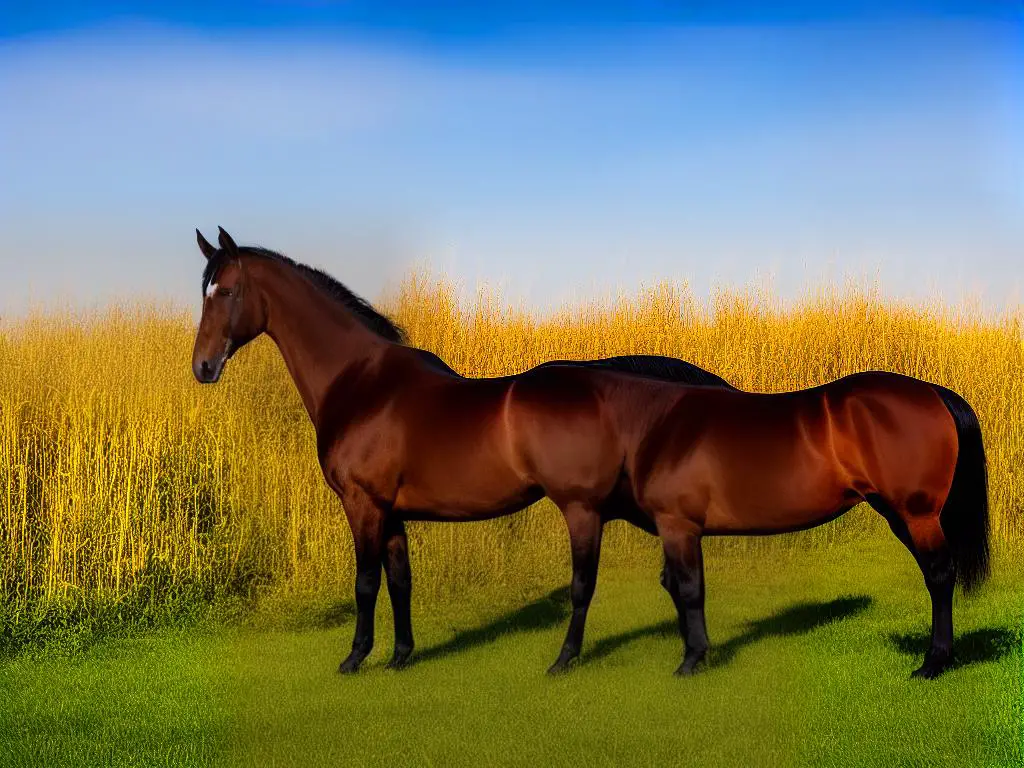
Exercise and Conditioning
Regular Exercise for Kentucky Saddlers
In addition to proper nutrition, regular exercise is essential for maintaining the overall health and well-being of a Kentucky Saddler horse. A well-rounded exercise and conditioning program not only helps prevent various health issues such as obesity, colic, and joint problems, but also enhances muscle tone, improves cardiovascular capacity, and strengthens the immune system. Kentucky Saddlers are known for their stamina, versatility, and smooth gait, making them well-suited for different types of exercises and equestrian disciplines, which should be incorporated into their daily routine in order to maximize their health and longevity.
Exercises and Activities for Kentucky Saddlers
There are various exercises and activities that can be incorporated into a Kentucky Saddler’s exercise routine to keep them engaged, healthy, and happy. One common activity for these horses is trail riding, which provides a steady workout and challenges their balance and agility as they navigate through different terrains. Additionally, training for and participating in endurance events are great ways to test their stamina and ensure their cardiovascular system remains in top shape. Moreover, regular dressage training can improve their strength, flexibility, and responsiveness, allowing them to maintain the smooth and graceful movements that they are known for.
Lunging as a Conditioning Tool
Lunging, which involves directing a horse to move around the trainer in circles, can be an effective conditioning and training tool for Kentucky Saddler horses. It helps promote balance, flexibility, and focus, while allowing the trainer to monitor the horse’s movement, rhythm, and pace. Incorporating obstacles and pole work into lunging sessions can provide mental stimulation and further hone the horse’s agility and precision. It is essential to ensure that exercise sessions are well-balanced, adhere to a suitable intensity and frequency, and are progressively challenging to support the continuous growth and development of the horse.
Maintaining Optimal Condition
To ensure the health and well-being of a Kentucky Saddler horse, it is crucial to implement a consistent, varied, and appropriate exercise regimen. This not only keeps the horse happy but also paves the way for a long, productive life by maintaining its optimal condition.
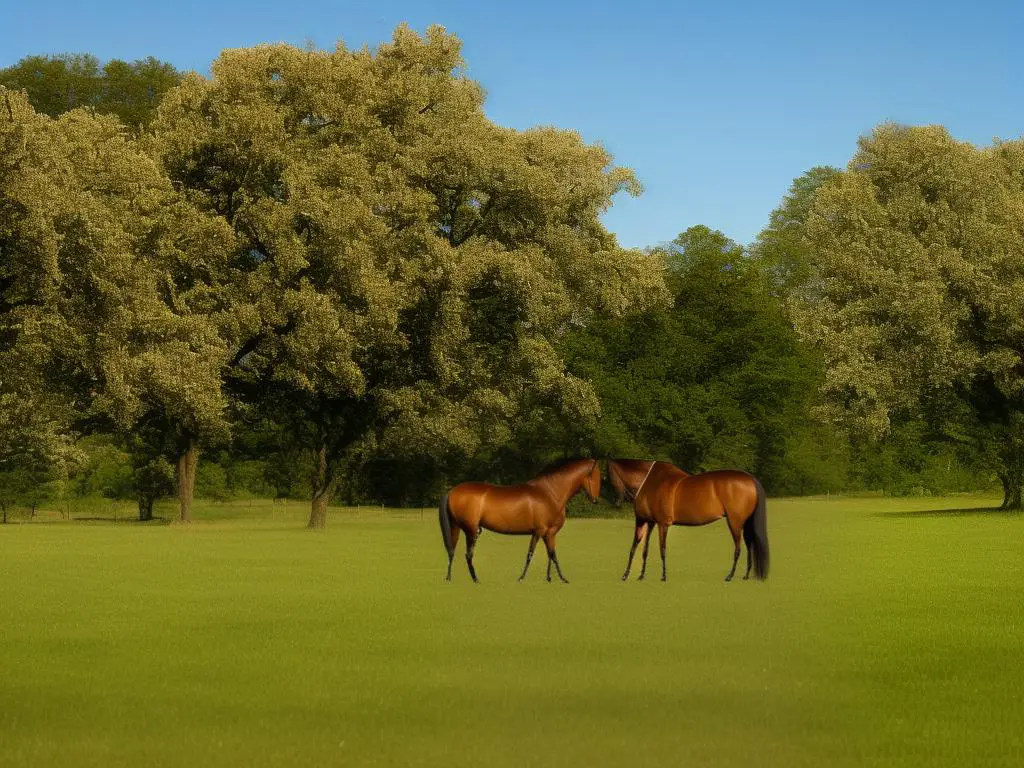
Management of Health Issues
Common Health Issues Faced by Kentucky Saddler Horses
Awareness of potential health issues is equally important for maintaining a Kentucky Saddler’s well-being. One such common issue faced by these horses is colic, a term describing abdominal pain stemming from digestive problems. Veterinarians diagnose colic by examining factors like the horse’s behavior, heart rate, temperature, and intestinal sounds. Treatment can range from pain management through medication and laxatives to surgical intervention in severe cases involving blockage, twisting, or damage to the intestine. To manage and prevent colic, it is necessary to monitor the horse’s diet, provide clean water, and ensure proper dental care regularly.
Laminitis
Laminitis is another health issue that affects Kentucky Saddler horses. This painful and debilitating condition affects the horse’s feet, specifically the laminae which connect the hoof wall to the underlying structures. Diagnosing laminitis typically involves a thorough examination of the hoof for heat, increased digital pulse, and any changes in the horse’s gait. Treatment options can range from medication to reduce inflammation and pain, therapeutic shoeing, and in severe cases, surgical intervention. Managing laminitis involves maintaining a balanced and proper diet, regular hoof care, and consistent exercise to promote healthy circulation within the hoof.
Respiratory Issues
Respiratory problems, particularly a condition called Heaves or Recurrent Airway Obstruction (RAO), are common among Kentucky Saddler horses. This condition results from an allergic response to dust and mold often found in hay and organic materials. To diagnose Heaves, veterinarians perform physical examinations, assess breathing patterns, and may also use x-rays or endoscopy. Treating Heaves typically involves administering corticosteroids or bronchodilators to reduce inflammation and open airways. Effective management of this condition focuses on improving the horse’s living environment, including providing dust-free hay, ensuring proper stable ventilation, and minimizing allergen exposure. Regular exercise and maintaining a healthy weight play a crucial role in preventing Heaves from worsening and should form an integral part of a Kentucky Saddler’s care plan.

Senior Horse Care
Senior Kentucky Saddler Health
In addition to addressing respiratory issues, it’s essential to pay close attention to the health needs of older Kentucky Saddlers, as they face unique challenges associated with aging. Caring for senior horses requires owners and caretakers to stay vigilant and prioritize their well-being.
Gradual Loss of Teeth
One common health issue among senior horses is the gradual, sometimes unnoticed, loss of teeth. This can lead to uneven wear and, ultimately, difficulty in chewing and digesting hay and grain.
To address this, it’s crucial to schedule regular dental check-ups with a qualified equine veterinarian who can monitor tooth health and provide appropriate treatments when necessary.
Additionally, switching to softer feeds, such as senior-specific or soaked feeds, can make eating and absorbing nutrients easier for the aging horse.
Adjusting Exercise Requirements
Exercise requirements for elderly Kentucky Saddlers may also need to be adjusted due to a decrease in their overall strength and stamina.
While regular movement remains key to maintaining overall health, exercise sessions should be tailored to meet the specific needs of the senior horse.
Light riding or groundwork can help maintain muscle tone, flexibility, and balance without causing undue stress on joints and ligaments.
Keep a close eye on the horse’s attitude and energy levels; this will help you avoid overworking or pushing them too hard.
Weakened Immune System
The immune system of an aging Kentucky Saddler can be weaker compared to their younger counterparts, making them more susceptible to illnesses and infections.
It’s critical to maintain a comprehensive and up-to-date vaccination schedule, as recommended by the horse’s veterinarian.
Regular deworming is also essential to prevent parasitic infections, which can have severe consequences for the health of a senior horse.
Finally, frequent health checks should be conducted on a regular basis, with particular attention paid to any sudden or concerning changes in behavior, weight, or physical condition. This proactive approach to veterinary care is crucial to ensuring that potential health issues are identified and addressed as early as possible.
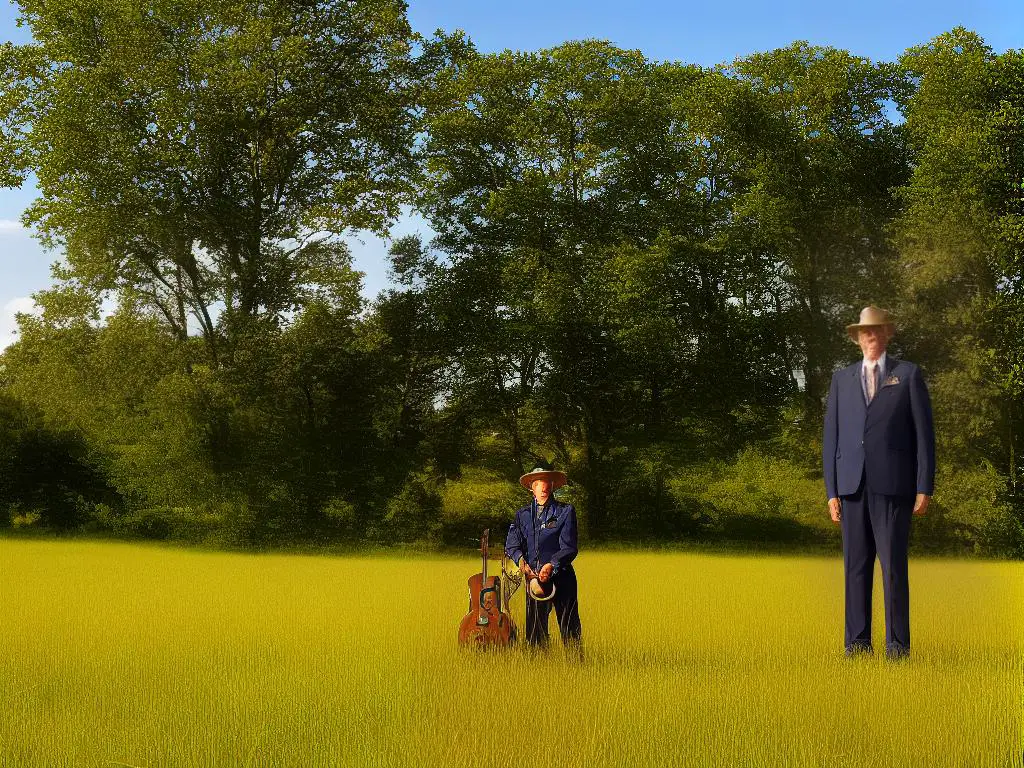
With proper care, preventative measures, and attention to nutrition, exercise, and management, Kentucky Saddler horses can enjoy a long, healthy life. Whether young or old, these majestic animals require dedication and commitment, but the rewards are well worth the effort. The bond between horse and owner is truly special, and ensuring the well-being of your Kentucky Saddler will only serve to strengthen that unique connection.
